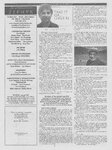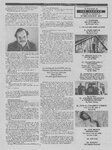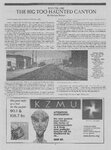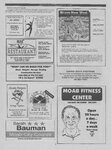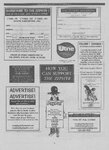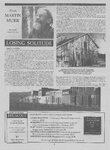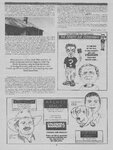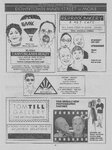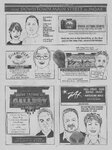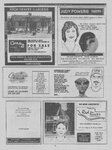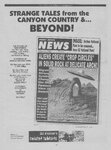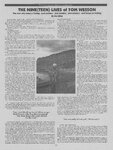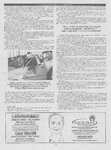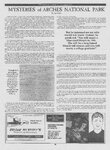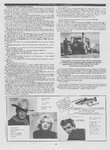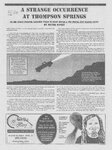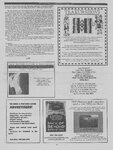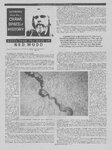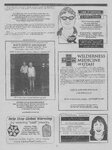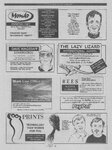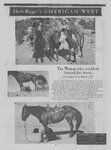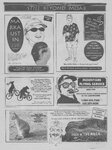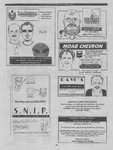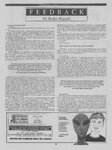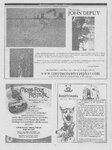| OCR Text |
Show THE ZEPHYR/OCTOBER-NOVEMBER 2007 POINTBLANK THE BIG TOO HAUNTED CANYON By Herbert Steiner Around the corner and up the hill the blind man walks. I loved riding trains. On one of my train trips I went to Thompson, Utah, a flagstop on the railroad. There really wasn’t much there, but there was a motel and Sadie, the owner, told me that there was Indian art up the canyon and that further up were the ruins of the old coal mining town Sego. Someone told me there was a Chinese cemetery nearby that I could easily get to on a road. So early one morning, I got up and walked on the road up the canyon to see these sites. I passed the Indian art that was close to the road and the place felt haunted. I walked on further until I came to a side road that led into a smaller canyon. There were ruins along the road that gave evidence that people once lived here. I could see small dwellings dug into the earth. Then I came to what was left of Sego. One could see the stone foundation of a large building the pioneers had built there. Here, I nearly stepped on a snake that wiggled out of sight. I walked further. I found a few old cars that had been left there and I noticed that it was damp enough here for the sagebrush to grow. There But the remoteness of Thompson and the canyon that haunted me kept me coming back for years. I cannot get back to Thompson anymore because I am now blind. | have thought a lot about the haunted canyon and the Indian art there. I don’t seem to understand this art fully. Perhaps the Indians were drawing Spirits that are still there in the canyon. A Kurdish woman helps me live in my apartment. She read to me from the journal that Herman Melville wrote when he visited Istanbul, her home town. She told me of Melville’s visit to Istanbul in the 1850s. How he’d approached the fog enshrouded city with some fear and dread and had been uncomfortable with the drastically different culture that confronted him. Melville walked the streets, to the Cistern and the Great Bazaar, a place where a stranger could easily become lost. But later he came to relish the Mystery of the fog and the strangeness of the culture. He looked at the Dome of Saint Sophia, but loved the fog that partially obscured it-the fog left more to his imagination. He’d been warned to fear the city but es I loved riding trains. On one of my train trips I went to Thompson, Utah, a flagsto on the railroad. There really wasn’t much there, but there was a motel and Sadie, the owner, told me that there was Indian art up the canyon.. wasn't anything there that I wanted to take a picture of with my camera. Walking back to Thompson I saw a dim road leading up a hill near Sego. I realized this road might take me to the Chinese cemetery. I followed this road to the top where I saw a small area of graves with lovely headstones. I took pictures of the headstones with the miles and miles of Bookcliffs in the distance. I got back to Thompson in time to get supper. At night I heard the trains go by and was glad I was not in the canyon, that I was in the motel at Thompson. instead he was mesmerized by it. I would never be haunted by anything again. Melville and the mosque in the fog gave me the courage. I would use my imagination like Melville did and not be haunted. If I could return to the canyon I would walk by the Indian art and the Spirits like Melville through Istanbul. Herbert Steiner, 85, lives in Seattle, Washington. Use your radio as a tool for the people! 90.1 & 106.7 fm ATTENTION EARTHLINGS: We now control our media... LL forms of communication to & from é your pathetic species will be monitored by us... GIVE UP. 100% WIND-POWERED LISTEN TO KZMU, monitored or otherwise, anywhere on Planet earth & Beyond, on our website. , www.kzmu.org |

